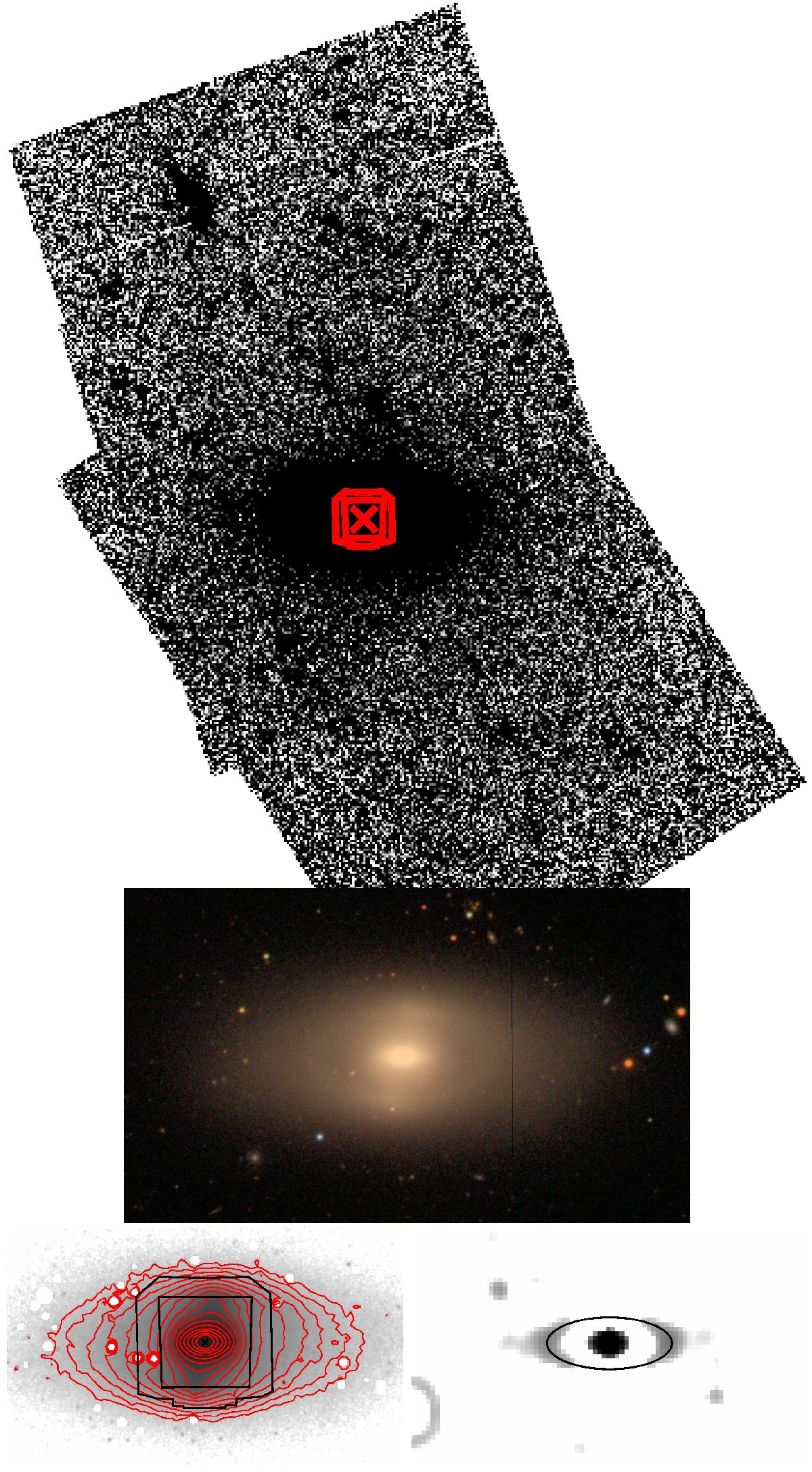Fig. 1

Top: reduced S4G mosaic of NGC 4371 displayed using histogram equalisation in order to highlight faint features. The inner red box represents the MUSE field of our exposures, with 1′ on a side. This image suggests the presence of a very faint polar ring that could have originated in an encounter with a satellite galaxy, but the evidence for it is weak at best. No sign of a violent recent interaction is seen. Middle: SDSS colour composite of NGC 4371, 6.6′ on its longer side. Bottom left: central region of the S4G image with isophotal contours overlaid in red and a diagram overlaid in black representing our MUSE exposures. The MUSE field is the inner trapezoid; the outer polygon area is used to acquire point sources for the slow guiding system. The bar is clearly seen. Bottom right: image obtained via unsharp masking of the S4G image, showing clearly the ring near the centre of NGC 4371. This ring has a semi-major axis of ≈10.4′′ and a semi-minor axis of ≈4.3′′. It has a width of about 2′′ and is delineated by the black ellipse. North is up, east is to the left in all panels.
Current usage metrics show cumulative count of Article Views (full-text article views including HTML views, PDF and ePub downloads, according to the available data) and Abstracts Views on Vision4Press platform.
Data correspond to usage on the plateform after 2015. The current usage metrics is available 48-96 hours after online publication and is updated daily on week days.
Initial download of the metrics may take a while.






